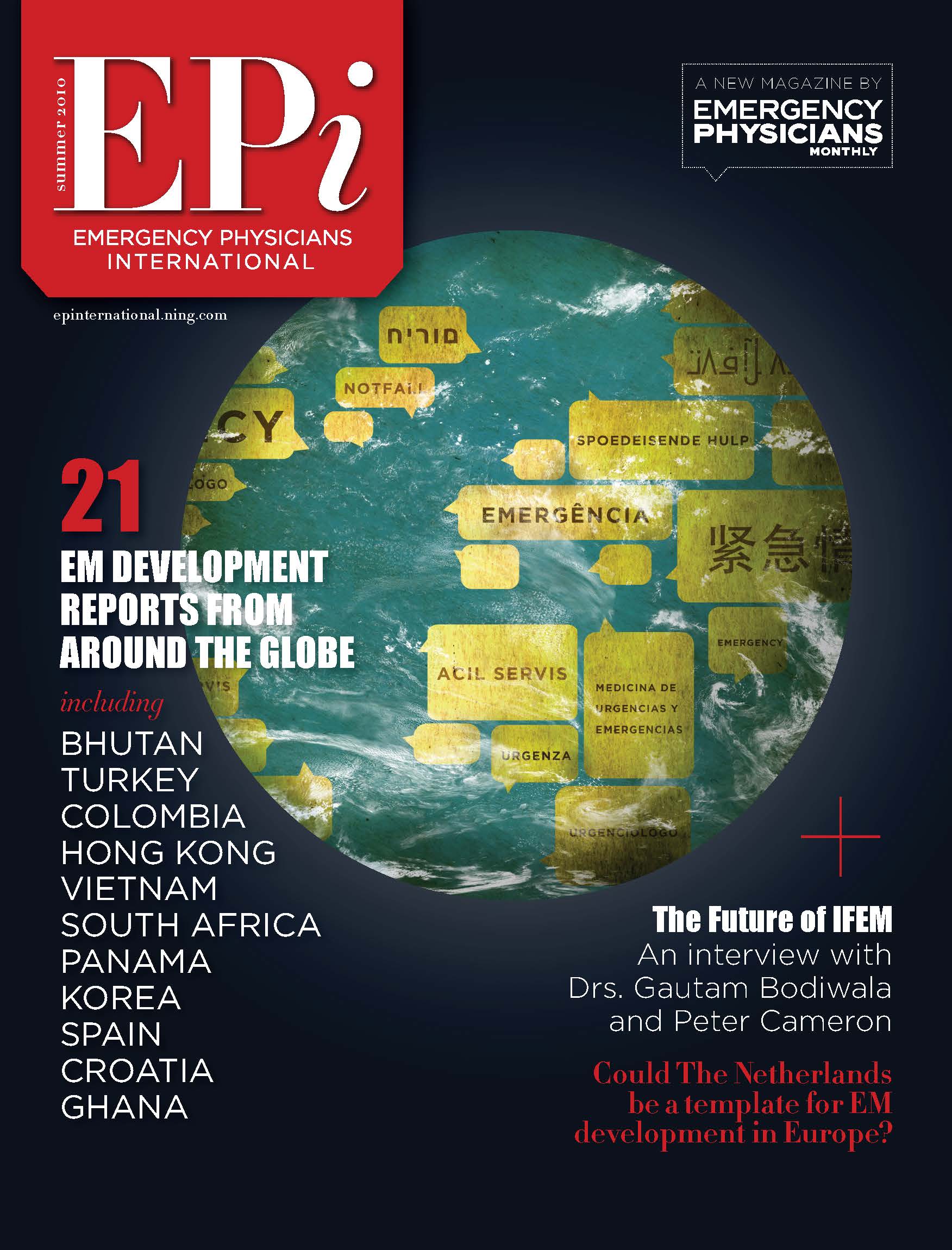Harmonizing Your ED: Lessons in Leadership from the Orchestra Pit
In this article from the EPI vault (Issue #13, 2013) former EuSEM president Dr. Barbara Hogan gives lessons in ED leadership pulled from her time as an orchestra conductor.
Last weekend, I decided to lead a team of 50 highly-trained, motivated professionals – including several prima donnas. I made decisions under time pressure, with no leeway for error, but in the end, I created harmony.
No, I wasn’t working an extra shift leading my emergency department in Hamburg, Germany. I was taking a special training course about how to conduct an orchestra.
The parallels in the leadership of an emergency department and conducting an orchestra have long fascinated me, partly because they both are as much art as science. You can see and hear the dire results immediately when an emergency department or an orchestra is not led properly, but the precise formula for success is complex and extremely difficult to find.
I traveled to Berlin for the first session of the seminar, which took place in the Berlin Philharmonic Orchestra’s grand concert hall where the likes of Herbert von Karajan and Leonard Bernstein have conducted. Our course was called Conducting and Leadership (Dirigieren & Fuehren). The group of nine participants gathered in the concert hall and were immediately assigned a spontaneous task: listing the essential qualities that a conductor must possess.
Here’s what we came up with: visibility, clarity, creativity, charisma, transparency, professionalism, musical virtuosity and the ability to interpret. But, truth be told, most participants said they had no idea of what conductors actually do apart from wave their arms around and acknowledge applause.
Our seminar leader, Professor Gernot Schulz, an eminent German conductor, showed us the three basic figures to conduct music in the three main slow, medium speed and fast rhythms using the right hand. He also showed us the basics of using your hands to direct the orchestra to play more loudly or quietly.
He also explained that the key point of conducting is not to order the orchestra to play the beat of every note but to give the impulse for the music — at precisely the right moment — and to set the speed of the music. Between the impulse strokes, the conductor gives guidance, allowing the musicians to use their own genius to contribute to the music’s beauty.
We began with an exercise of conducting the other students in hand-clapping. We quickly discovered that even this was difficult. You need to decide in advance what you want and then communicate clearly what people must do. Non-verbal communication is 80 percent of conducting, we were told. Only 20 percent is musical knowledge.
Next came our first encounter with a musician and with another part of conducting: The orchestra will do exactly what you tell them. If you tell them to play in the wrong beat, then, guess what, they will play incorrectly.
Our pianist would play the prelude from Bizet’s opera Carmen with full Spanish temperament and passion – if you gave him the correct beat. But if you gave him the beat of a funeral march, he would play Carmen like a dirge.
The day ended with a concert from the Berlin symphony orchestra with special seats watching the conductor from the front. Here we could see a master at work, using the techniques we had just learned — but, with the minimalism of the maestro, to gain the maximum beauty of the artistic work through the harmony of the orchestra. The music was fantastically beautiful because the conductor maximized every musician and brought them together as a single unit and by trusting them to perform their solos.
The next day we had the chance to put this active and passive learning into action by conducting an orchestra of 50 musicians ourselves. We learned that an orchestra consists of sub-units with a leader: such as the violins, violas, cellos, wind instruments and percussion. Each of the leading players needs clear instructions from the conductor with the other players in the section following. We learned that breathing and eye contact are crucial.
My first piece was the allegretto from the second movement of Beethoven’s symphony number 7, slow music which builds up in stages like a procession coming closer and closer. I brought myself into the starting posture with upright yet relaxed body with both hands up in front of my body. Then I made eye contact with the leaders of each section to ensure they were ready to start.
I learned the initial intake of breath is a vital signal that I am about to start and the intake of breath was part of the beat, creating controlled tension like a sprinter ready to start a race. I gave the signal for the orchestra to start with a clear stroke of the baton, which also gave the critical impulse for the music.
The impulse stroke always goes downwards as a straight and clear stroke. The following strokes can be smaller, giving harmony to the music. You allow the musicians freedom to play their harmonies after your main impulse, letting them use their skill to achieve a creation of beauty. Then came a new impulse stroke with eye contact with the section leader as each section of the orchestra joined in one after another as we built up slowly to the piece’s crescendo. I signaled the increase in volume by gradually widening my arms until the beautiful crescendo was reached.
Then I gave a clear signal with my fist – rather like catching a ball – that we had reached the end and we must stop, suddenly all together.
I felt a wonderful wave of happiness because I had created this music. I had directed the musicians to play this great piece of beauty. I had had to fight the urge to shut my eyes to enjoy the wonder of Beethoven’s genius because I would have lost eye contact with the musicians and so lost control of the orchestra.
The next challenge was to conduct music with very different speeds: The fire-like pepper of Brahms’ Hungarian Dance and the luscious and faster harmonies of the minuet from Mozart’s symphony number 39.
I was delighted to get a round of applause from the musicians who “clap” by hitting their music stands with their bows. The musicians also gave direct feedback to the student conductors about what they found good and bad, this can be fun – and can be painful.
Thinking back about the words we had used to describe what talents a conductor needs, I came away convinced of the strong parallels between an orchestra and an emergency department team.
An emergency department leader needs to be visible and accessible. Instructions must be very clear. But if you have no vision about the daily work of your department, how can the clearest instructions be carried out to reach your goal?
An orchestra comes together to create work with the highest possible perfection. So does the team in an emergency department. What work, after all, could be more critical, more essential, than saving lives when every minute counts. The role of an emergency department leader is to provide the impulse, to guide physicians, to help them use their genius to care for patients, not to control them every second of the day.
Providing clarity, giving a clear goal, holding the controlled tension until the goal is reached but allowing the team freedom inside this structure is the challenge when you “conduct” an emergency department. Furthermore, no emergency department leader should insulate themselves from feedback, good or bad.
Charisma? The experience of conducting 50 musicians to create beautiful music certainly gave me the feeling I indeed had charisma. Whether this is true will have to be judged by the people who watch my next EuSEM speech!
And to my ED friends, if, at a moment of stress, you’re wondering how to make your department function harmoniously, remember: The answer may lie in your ability to provide the right impulse, at the right moment, to bring everyone into harmony.
This essay originally appeared in Issue 13 of Emergency Physicians International in 2013.







